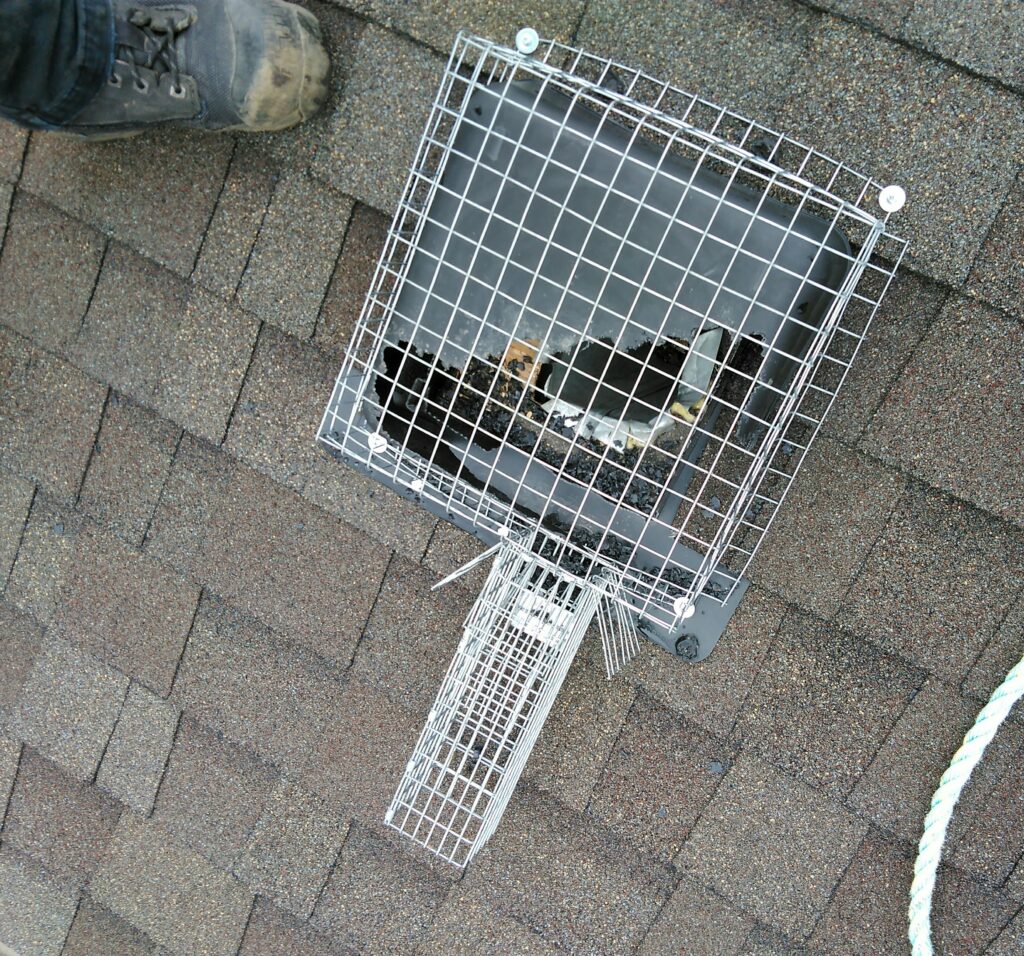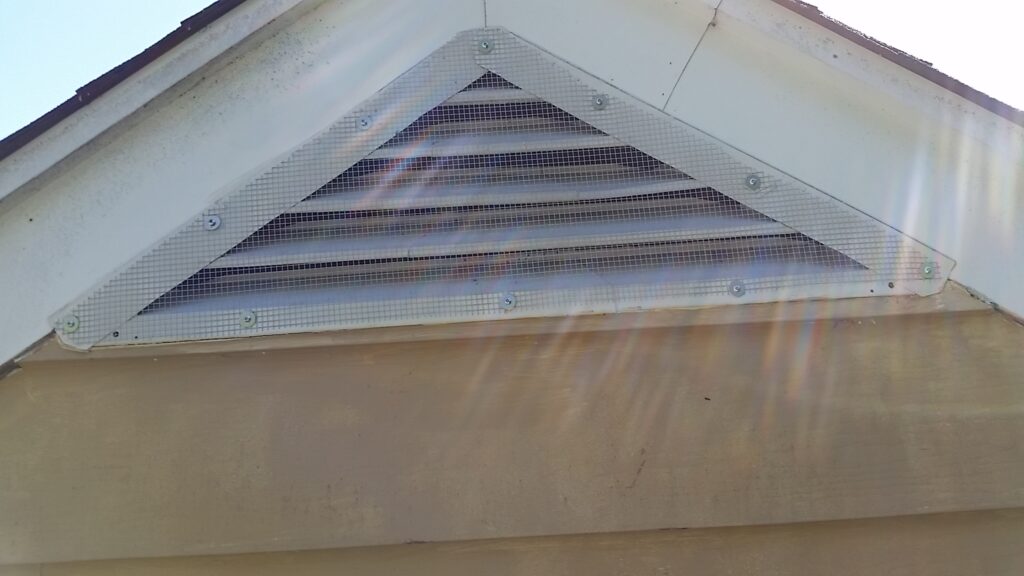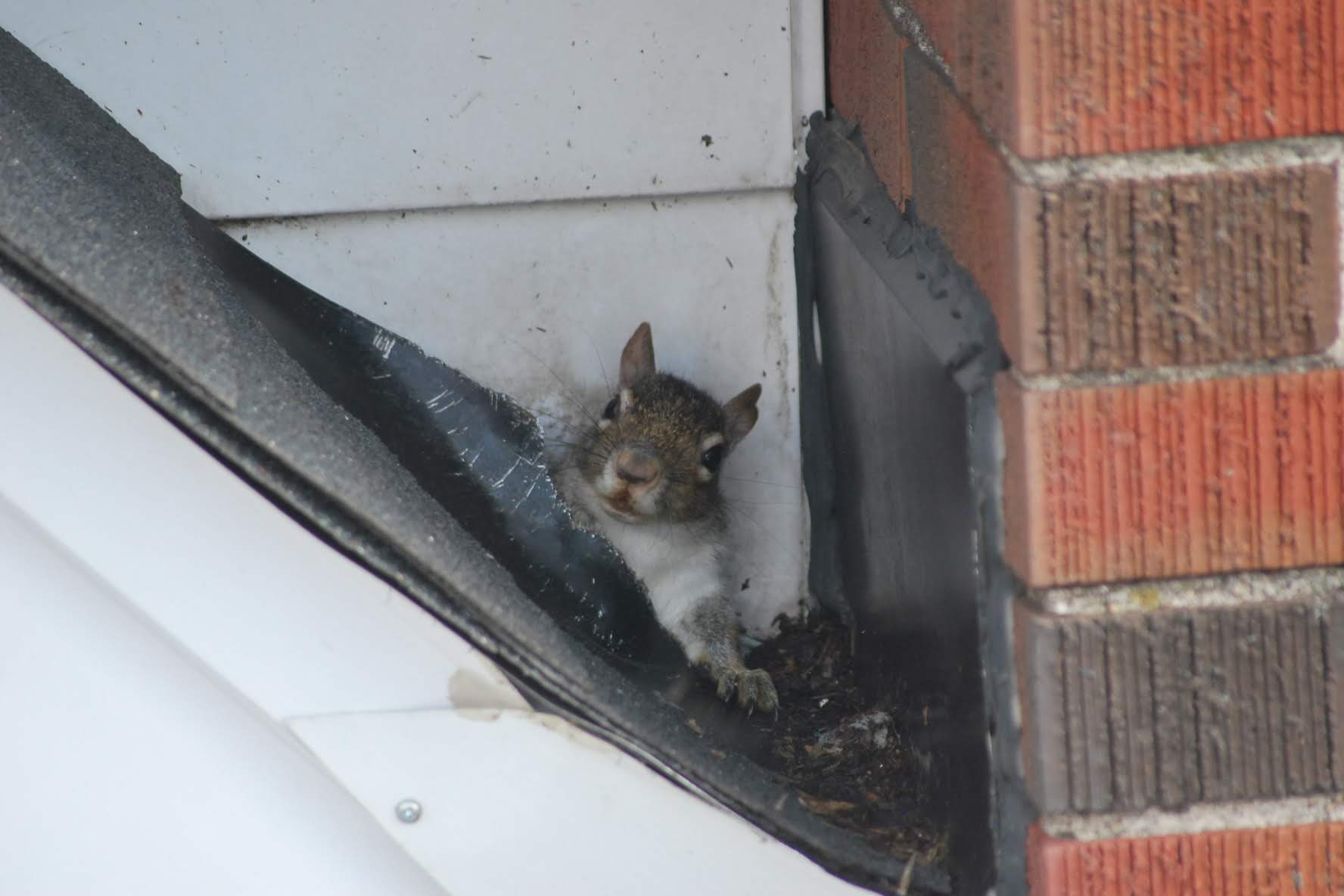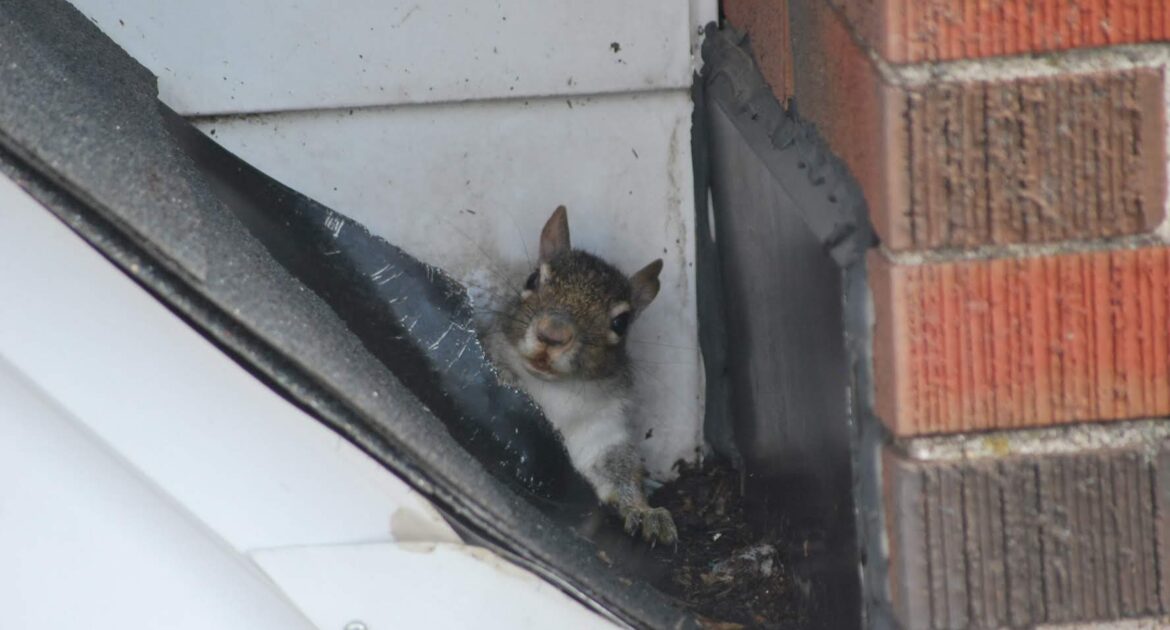Raccoons know their way around your home and your city, and they get a lot of press because of their crazy antics but there is another home invader that gets less exposure but can be just as destructive – the squirrel.
“There are 35 to 50 items on a home that squirrels can gain access into,” according to Bill Dowd, urban wildlife expert, and CEO of Skedaddle Humane Wildlife Control.
Squirrels are very adept at getting into your home; any hole, any time is an invitation for a squirrel to invade your roof or attic and build a nice comfy nest where they can produce many babies. Raccoons may have the advantage of strong paws, but squirrels have strong jaws, they can use their powerful teeth to chew through wood, electrical cables, plastic, and most other regular house building materials. Like most wildlife, a determined squirrel can cause considerable damage to your home, so be on the lookout for these little guys.

Common Squirrel Entry Points
Squirrels are attracted to a warm comfy attic that is easily accessible. This means you need to be vigilant and make sure that you do not inadvertently invite them to take up residence in your attic. You need to make sure that your home is always well looked after and properly maintained. It is important to have your roof inspected at least once a year, preferably in the fall before the harsh weather sets in because this is when wildlife is looking for a cozy place to spend the winter.
As Bill Dowd explains, “Any crack or crevice on a roofline above the eavestrough where a squirrel can get their teeth in and start chewing, they will. They will expand that opening from just the size of a dime until the size of your fist and then they can come and go, build a nest and have six or seven babies in your attic.”
If you suspect that you have a resident squirrel or if you think that your roof is not secure, contact a professional wildlife control service to inspect your roof. They have the right equipment and know what to look for. During a roof inspection, a Skedaddle Technician will pay close attention to:
Roof and Gable vents
“One of the most important things to screen on your home is your roof vent. Those are the primary entry areas for not only squirrels but raccoons as well as birds.” According to Bill Dowd. Roof vents are necessary in most houses as they release warm air and make your home more comfortable to live in, but squirrels see roof vents as an invitation to move in. Typical plastic and aluminum roof vents are no match for a determined squirrel, and they can easily chew through this material and make a nest in your attic. It is important to install roof vents made from an appropriate material and check them regularly to make sure that they are secure and squirrel proof.
Gable vents serve the same purpose as roof vents and houses typically have two installed on either side of the roof gable. If these vents are made of a soft material like wood, plastic, and aluminum, they are a good target for a determined squirrel looking for a convenient entry point into your home.

Roof edges
The often damp, wet conditions and harsh weather mean that roof shingles and boards deteriorate quickly. Your roof edge will erode first because that is where the moisture collects and ice dams form. As the wood deteriorates, it weakens and softens, becoming easier for squirrels to chew through. Good, regular home maintenance is essential to protect your home against wildlife invasions.
Roof and Soffit Intersections
Where two roofs meet is always a potential entry point for bad weather, debris, and unwanted visitors. Unfortunately, the meeting points never stay flush and shingles from the lower roof typically don’t seal completely with the soffit above. What better place for a squirrel to find an entry point than where roofs and soffits meet.
Wall vents and plumbing mats
Exhaust pipe exits for kitchens, bathrooms, and laundry rooms are found on the outside walls of most homes and their regular plastic covers are no match for a squirrel’s strong teeth. It is important to ensure that these wall vents are well secured with appropriate covers. The hole for the plumbing vent is often cut larger to extend the pipe outside and the gap is sealed with a rubber mat, definitely an inviting entry point for a squirrel.
Chimneys
Uncapped chimneys are favourite entry points for squirrels, but the aluminum or clay lined flues are difficult for them to climb and they can easily fall down into the fireplace and wreak havoc in your home.
Protecting your property from squirrels
Squirrels love birdfeeders. Providing an unlimited food source for wildlife is not healthy, it affects the animal’s ability to survive in the wild and encourages undesirable contact with people. There are numerous injunctions against feeding bears and other large wildlife, most notably in rural areas. Some larger cities, like Toronto, Vancouver, and Hamilton, also prohibit the feeding of wildlife, but many other towns and cities do not. Just because it is not against the law, does not mean that feeding squirrels should be encouraged.
Get a Professional to Squirrel Proof your Home
DIY wildlife control measures are no match for cunning squirrels. If you suspect that your home is not squirrel proof, contact Skedaddle Humane Wildlife Control to do a home inspection. We will assess your home and determine what needs to be done. Accurate identification and safeguarding of entry points are essential to securing your home against squirrels and putting an effective prevention strategy in place.
Squirrel prevention is not a job for amateurs, and neither is squirrel removal. These clever little animals will run rings around you if you don’t know what you are doing. Skedaddle technicians understand animal behaviour and use this knowledge to safely remove any squirrels from your attic before sealing up their entry points and securing your home for many years to come.




